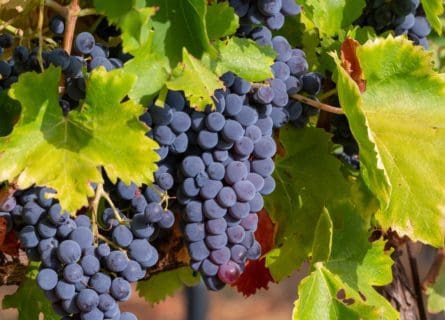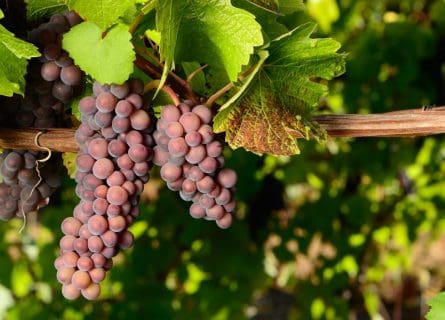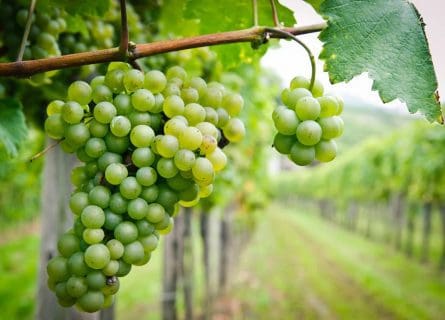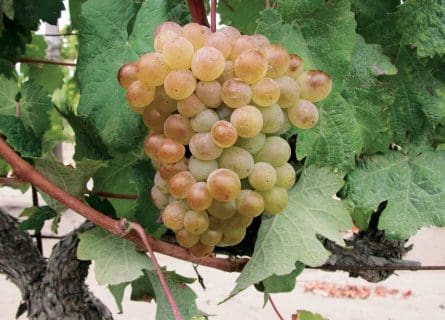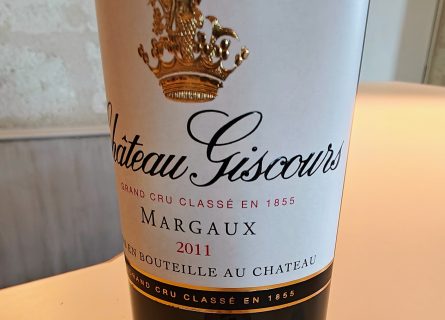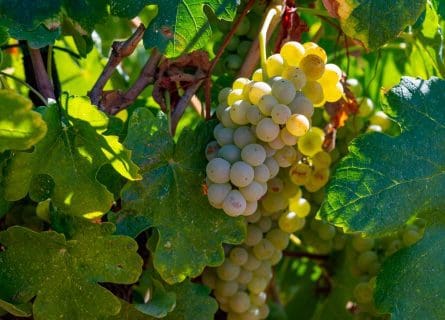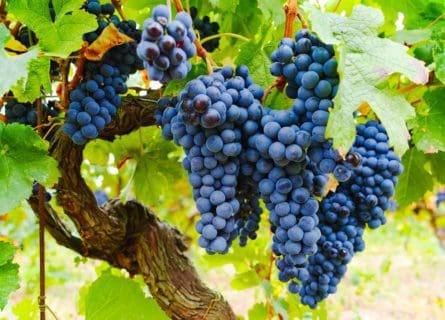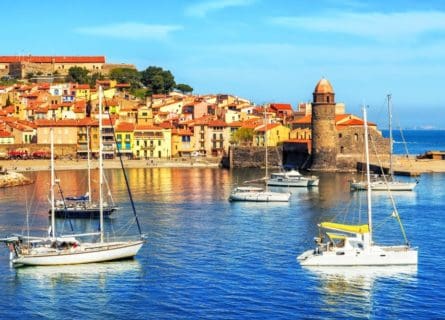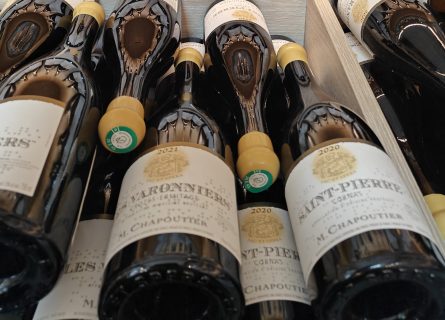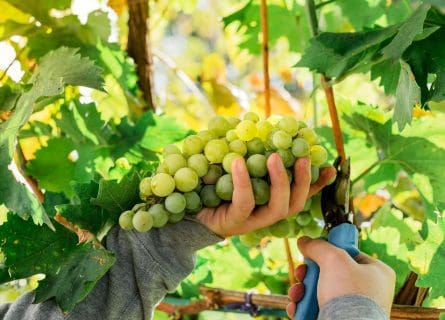Tavel Wine Region Guide
Tavel: The Original Gastronomic Rosé - Elevating Every Meal with Its Unmatched Strength and Body
EXPLORE ALL OUR RHôNE VALLEY WINE REGION GUIDES
Last updated: April 4, 2025
Introduction
Exported and adored worldwide, this highly fashionable wine is an anomaly in the southern Rhone Valley. This is the only appellation that exclusively dedicates itself to producing rosé: a robust, dry, and full-bodied drop that one should never serve as an aperitif.
Instead, enjoy the rich fruit and surprisingly tannic heft of a Tavel pink alongside Bouillabaisse, salade niçoise, and tapenade. It is the ultimate gastronomic rosé, able to handle any flavor – and texture – you throw at it!
Discover More About French Wine
History
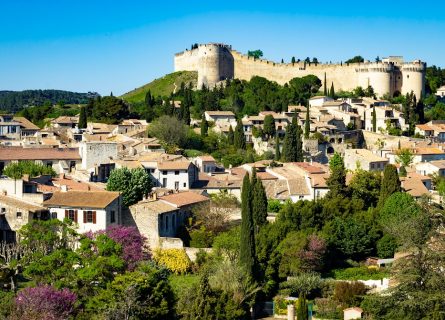
Tavel is arguably still the best-known specialist in rosé. However, sweet wines have a far longer history in the southern Rhone Valley than dry styles. Greeks from Asia Minor (modern-day Turkey) colonized its hills and plains around 600 BC and founded the city of Marseille.
They planted some of the first vines in the southern Rhone, producing intensely sweet wines often adulterated with herbs and seawater.
However, the Roman armies subsequently displaced them, triumphing over the Greeks and Celto-Ligurians in 125 BC. Establishing bases along the coastline and further inland, the forces of Rome consolidated their hold over “Provincia Romana” – a vast landmass that included the Alps, the Mediterranean, and the southern Rhone Valley.
Transition and Struggle in Viticulture Post-Roman Era
Yet after the collapse of the Western Roman Empire in the 5th century, viticulture and farming inevitably took a back seat as rival civilizations fought over the spoils. In the Dark Ages, the Visigoths, Burgundians, and Ostrogoths invaded Provence and the southern Rhone several times. Meanwhile, the forces of Tariq ibn Ziya, a Muslim governor from Tangier, had successfully invaded Spain in 711. His Arab and Berber armies invaded France in 719.
However, they were defeated by the Franks and forced to retreat. After Pope Leo III crowned Charlemagne Holy Roman Emperor in AD 800, Christianity asserted itself across Western Europe with impressive tenacity. This also impacted viticulture in the Rhone, as the Catholic Church assumed responsibility for growing vines and producing wine.
The Papacy’s Influence and Tavel’s Rise to Fame
During the 1300s, the relationship between the Papacy and the Rhone Valley took a whole new direction. After infighting and a series of violent conflicts consumed Rome, the church moved its headquarters to Avignon.
By the 17th century, Tavel’s reputation had spread to the Iberian Peninsula; the Spanish king Philip IV proclaimed Tavel “the only good wine in the world.” It is also said that Louis XIV was a fan of Tavel’s pale red wines. Interestingly, Avignon remained under Papal control until the outbreak of the French Revolution in 1789.
Over a century later, in 1936, Tavel received AOC status. Since the early 20th century, it has maintained its cachet as a leading source of fine gastronomic rosé, as global demand remains as buoyant as ever.
Geography and terroir
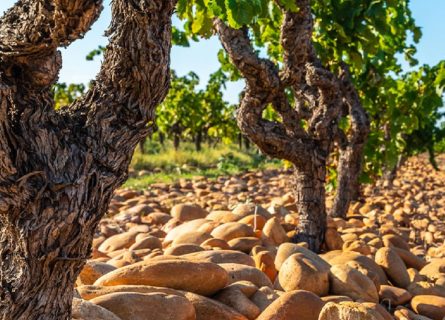
The expansive vineyards of Tavel, west of the Rhone, are planted to the same grapes as Châteauneuf-du-Pape, its larger neighbor across the river. And, like that iconic region, Tavel’s hot and sunny Mediterranean climate, with its mild winters (and warm springs), has made it renowned.
Followed by incredibly dry summers, temperatures in Tavel routinely climb to 104 Fahrenheit in July and August. Thus, achieving full physiological ripeness in this corner of the Rhone Valley is a virtual certainty. A rain-soaked vintage is a very rare thing indeed.
Geographical Position and Vineyard Characteristics
Today, approximately 896 hectares are planted in the zone, situated northwest of Avignon. Oenophiles familiar with the landscape of Châteauneuf-du-Pape will instantly recognize the galets found in certain parts of the appellation.
These smooth, heat-absorbing rocks are concentrated in the eastern vineyards of Tavel, where they are known as “Galets Roules.” Much like the gravel of Pauillac and Margaux, they absorb heat during the day, releasing it into the vine canopy as the afternoon progresses.
Moreover, these metamorphic terroirs offer excellent drainage, forcing vine roots to dig deep in search of essential moisture and nutrients. As a result, these vineyards produce some of the most potent and concentrated rosés, where ripeness levels and alcohol often reach very high levels.
Soil Diversity and its Influence
Yet the soils of Tavel are not homogeneous. There are vineyards in the zone, for instance, that have hardly any galets but quite a high proportion of both sand and clay. The former tends to yield lighter wines with softer tannins and great perfume.
The iron-rich clay soils of Tavel, however, produce a very spicy and opulent expression of the Grenache grape. There are also outcrops of limestone in Tavel, which suit the white grape Clairette down to the ground. Generally, red varieties grown on calcareous soils in Tavel yield rosé wines with upfront aromatics and good acidity.
Evolution of Grape Varieties and Wine Quality
Historically, the Grenache, Cinsault, and Clairette grape varieties dominated Tavel. However, in 1969, the authorities decided to permit the inclusion of Syrah and Mourvedre, which greatly improved wine quality in the appellation. Both varieties can contribute significantly to the sometimes rustic blends of Tavel, enhancing the finesse and elegance of this iconic rosé style.
Winemaking and regional classifications
The rosé production takes inspiration from red and white winemaking practices, creating a style that could be classified as a tinted white or a light-bodied red.
However, the outcome will greatly depend on the vinification techniques employed and the grape varieties used, as both red and white grapes are permitted in Tavel. Local growers have even decided to adopt a unique designation that describes the particular way rosé is made in the region. It is known as the méthode Taveloise.
Transition to Modern Winemaking Techniques
Of course, much has changed over the past few decades. In the 20th century, winemaking in Tavel could be extremely rustic! The juice had little protective handling, relying on an excess of sulfur – or just blind luck – to produce a rosé that would retain its fruit after bottling. Yet aggressive signs of oxidation often robbed the wine of freshness.
Thankfully, modern Tavel rosés are made in a radically different mold. Today, all the best producers fashion wines with good color, intense aromatics, crisp acidity, and bright, sappy fruit. They rely heavily on temperature control during the fermentation, using ultra-protective handling to prevent any spoilage of the must.
Comparing Tavel Rosés with Provencal and Languedoc Pinks
Nevertheless, a good bottle of Tavel bears little resemblance (usually) to the very pale rosés of Provence and the Languedoc. A typical pink from Provence will have a light hue without a hint of tannin or extract on the mid-palate. A delicate winemaking procedure achieves this: winemakers add whole bunches to the press, and almost immediately after it has left the berries, they ferment the free-run juice at low temperatures. With just a fleeting amount of skin contact, this minimalist approach yields a very pale-colored wine or vin gris.
The Distinctive Méthode Taveloise
Yet growers in Tavel eschew this approach. They prefer the so-called méthode Taveloise, a variation on the pre-fermentation maceration technique. This process involves breaking the grape skins and chilling the bunches. Then, allowing them to macerate for about 12 to 48 hours before drawing off the must and vinifying it in stainless steel at temperatures below 68°F.
However, it is common for producers in the region to leave the juice in contact with the skin for up to 72 hours before draining off the must. In addition, it may be desirable to leave a percentage of the juice in the vat, adding to the fermenting wine at a later stage.
When winemakers combine this potent mixture with some press wine, they create a rosé style that would horrify Provençal pink enthusiasts.
Deeply colored and quite tannic, it is far more structured and complex than your average fruity concoction. Most importantly, it will improve with bottle age.
Facts & Figures
Key wine styles
- Full-bodied rosé wines
Appellation structure
- AOC travel
Hectares under vine
- 896
Average annual production
- 5 million bottles per annum
Approximate number of producers
- 35
The lowdown
In the opening decade of the 21st century, an unexpected development occurred all over the globe: rosé came back into fashion. This became a marketeer’s dream come true—making most rosé is inexpensive (and quick), requiring a minimum investment of resources and capital.
It is the ultimate money spinner, produced from a wide variety of grapes and in a broad spectrum of nations. Regions as diverse as the Loire Valley, Provence, Rioja, Bordeaux, Napa Valley, and Stellenbosch all export pink.
Tavel’s Standout Rosé
Yet, while manufacturers produce some rosé under industrial conditions, making it easy to quaff and even easier to forget, the best Tavel wines are an entirely different matter.
Indeed, Tavel often shocks wine lovers accustomed to the pale-colored and ubiquitous style of rosé made in southern France. Its distinctive orange, onion-skin tint, and rich mouthfeel are probably unlike anything you’ve ever tasted.
Its high alcohol and tannic structure invokes a bush-vine Grenache blend from Roussillon rather than a gently macerated rosé. Nevertheless, Tavel is a rosé wine. It’s just a different type of rosé from the one you’ve become familiar with and comfortable with.
Gastronomic Rosé: A Culinary Delight
Critics often refer to such wines as “gastronomic rosé,” perhaps the most appropriate term for a good bottle of Tavel. In terms of volume sold, the vin gris that lines supermarket shelves worldwide dwarfs it. However, it offers a depth of flavor that works fantastically well alongside Provencal cuisine.
Moreover, gastronomic rosé, occasionally enhanced with a dollop of new oak, is often better than the equivalent white or red wines you might enjoy with Coq au Vin or Dover Sole a la Meunière.
The world is full of light and airy Provencal pink, sold and distributed by the major players in the wine business at a cut price. In Tavel, however, we have a true original: a wine that can elevate any meal.
Key Grape Varietals
-
Clairette
Savor Clairette blanche, a captivating white wine grape from France's Chateauneuf-du-Pape, Provence, Rhône, and Languedoc vineyards
Find out more -
Cinsault
Cinsault is a red wine grape that is important in the Languedoc-Roussillon wine region of France because of its tolerance to high temperatures.
Find out more -
Grenache
Discover grenache, a mediterranean grape that is dark-skinned red wine grape variety and an unlikely hero of a grape
Find out more -
Mourvedre
Mourvèdre is a red wine grape variety of mysterious origin that's grown around the world, including the Rhone and Provence regions of France.
Find out more -
Syrah
Syrah is dark-skinned and perhaps the most underrated of the 'noble' red grape varieties.
Find out more
Tavel gastronomy
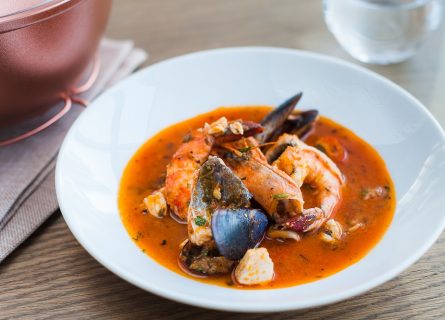
The food in Provence is everything you’d want Mediterranean cuisine to be: fresh, seasonal, and packed with flavor. So, if you’re a foodie, we advise spending your evening in Avignon. In the delightful old town, you’ll discover a plethora of bistros and superlative restaurants serving local delicacies such as Bouillabaisse, roast milk-fed lamb from the Camargue, perch, and Bœuf en Daube à la Provençale —beef casserole, in other words.
A Guide to the Cuisine and Gastronomy of Provence: Read more
Wineries Recommended by Cellar Tours
-
Chateau de Segries
Read more -
Domaine Amido
Read more -
Domaine Corne-Loup
-
Domaine de la Mordoree
Read more -
Domaine Lafond
Read more -
Guigal
Legendary Rhône wine producer famous for their exceptional Côte-Rôtie. Explore their extensive range of wines and rich history. Plan your trip! Read more -
Domaine Maby
Read more -
Famille Perrin
Read more
Further Reading: Discover More Related Blog Content
More information
If you would like us to customize an exclusive luxury tour, contact us and let us know your travel plans. We offer luxury food and wine tours for private groups of a mininium two guests. In addition, all of our private, chauffeured tours are available year-round upon request.



